Related Research Articles
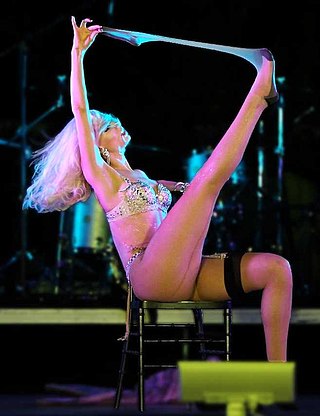
A striptease is an erotic or exotic dance in which the performer gradually undresses, either partly or completely, in a seductive and sexually suggestive manner. The person who performs a striptease is commonly known as a "stripper" or an "exotic" or "burlesque" dancer.

Ethel Waters was an American singer and actress. Waters frequently performed jazz, swing, and pop music on the Broadway stage and in concerts. She began her career in the 1920s singing blues. Her notable recordings include "Dinah", "Stormy Weather", "Taking a Chance on Love", "Heat Wave", "Supper Time", "Am I Blue?", "Cabin in the Sky", "I'm Coming Virginia", and her version of "His Eye Is on the Sparrow". Waters was the second African American to be nominated for an Academy Award, the first African American to star on her own television show, and the first African-American woman to be nominated for a Primetime Emmy Award.

Florence Mills, billed as the "Queen of Happiness", was an American cabaret singer, dancer, and comedian.
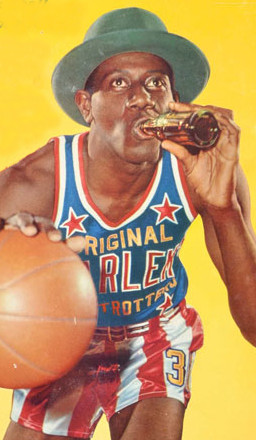
Reece "Goose" Tatum was an American Negro league baseball and basketball player. In 1942, he was signed to the Harlem Globetrotters and had an 11-year career with the team. He later formed his own team known as the Harlem Magicians with former Globetrotters player Marques Haynes. He is a member of the Naismith Memorial Basketball Hall of Fame and the Arkansas Sports Hall of Fame. Tatum's number 50 is retired by the Globetrotters.

African-American dance is a form of dance that was created by Africans in the Diaspora, specifically the United States. It has developed within various spaces throughout African-American communities in the United States, rather than studios, schools, or companies. These dances are usually centered on folk and social dance practice, though performance dance often supplies complementary aspects to this. Placing great value on improvisation, these dances are characterized by ongoing change and development. There are a number of notable African-American modern dance companies using African-American cultural dance as an inspiration, among these are the Whitey's Lindy Hoppers, Alvin Ailey American Dance Theater, Dance Theatre of Harlem, and Katherine Dunham Company. Hollywood and Broadway have also provided opportunities for African-American artists to share their work and for the public to support them.
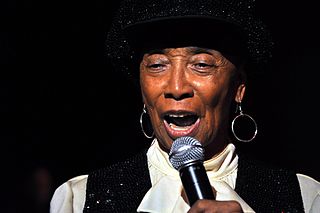
Norma Adele Miller was an American Lindy hop dancer, choreographer, actress, author, and comedian known as the "Queen of Swing".
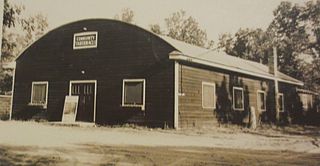
Idlewild is an unincorporated community in Yates Township, located just east of Baldwin in southeast Lake County, a rural part of northwestern lower Michigan. During the first half of the 20th century, it was one of the few resorts in the country where African-Americans were allowed to vacation and purchase property, before discrimination was outlawed in 1964 through the Civil Rights Act of 1964. The surrounding area is within Manistee National Forest. The community encompasses Lake Idlewild, and the headwaters of the Pere Marquette River extends throughout the region.

The Spirit Moves: A History of Black Social Dance on Film, 1900–1986 is a documentary film by Mura Dehn chronicling the evolution of African-American social dance throughout most of the 20th century. In its original form it consists of nearly six hours of rare archival footage shot over the course of thirty years. Since 1987 this complete version has only been available for viewing at a select few institutions. In 2008 the first three parts of Dehn's work, totaling two hours, were remastered and released on DVD by Dancetime Publications.
The Silver Belles were an American female tap dance troupe established in Harlem, New York City.

A vedette is the main female artist of a show derived from cabaret and its subcategories of revue, vaudeville, music hall or burlesque. The purpose of the vedette is to entertain and captivate the public. Vedettes are expected to sing, dance and act on stage. Particularly accomplished artistes are considered super vedettes or first vedettes. Vedettes often appear alongside groups of dancers, flashy and revealing costumes, magicians, comedians, jugglers, or even performing animals. Vedettes specializing in burlesque generally do striptease and may also perform nude on stage.
Sheila Guyse, was an American singer and actress, who performing on stage and screen during the 1940s and 1950s.

Leonard Harper was a producer, stager, and choreographer in New York City during the Harlem Renaissance in the 1920s and 1930s.
Ryan Francois is a swing dancer, choreographer and actor, who played a central part of the revival of the Lindy Hop . Specialising in dances related to the Jazz & Swing era - including the Lindy Hop, Charleston, Tap and Authentic Vernacular Jazz, Ryan has over 30 years dance experience.
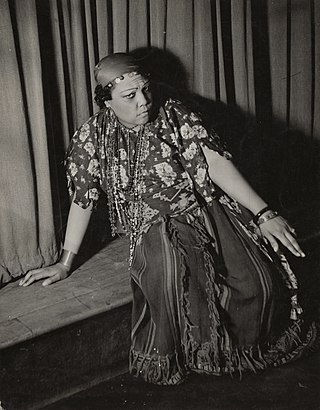
Minto Cato was a mezzo-soprano opera singer and show performer during the Harlem Renaissance from the 1920s to the late 1940s.
Lottie Gee(néeCharlotte O. Gee; 17 August 1886 Millboro, Virginia – 13 January 1973 Los Angeles) was an American entertainer who performed in shows and musicals during the Harlem Renaissance. She is perhaps best known as a performer in the 1921 Broadway hit, Shuffle Along, the show that launched the careers of Josephine Baker and Florence Mills.
Margot Webb was a professional dancer trained in ballet, waltz, tango, and bolero. She and her dance partner, Harold Norton, were one of the first African American ballroom teams and were known professionally as “Norton and Margot”.
Willa Mae Ricker was a prominent American Lindy Hop and jazz dancer and performer during the 1930s and 1940s with the Harlem-based Whitey's Lindy Hoppers. She was known for her physical strength, fashion sense, dependability, business acumen, and passion to dance. According to Norma Miller, Ricker was the first dancer to stand up to Herbert "Whitey" White, demanding fair pay.

Belle Davis was an American choreographer, dancer and singer who became famous in the UK before World War I. She was in a group called the "Octoroons" in America and moved to Britain in 1902 where she toured accompanied by young African American boys. She has been said to be the first black woman to make a recording.
Charlotte Grady Roxborough was a singer, dancer, and comedian who performed in theatrical productions and vaudeville as well as films. She was born to Wesley, a white father, and Susan (Kelly) Grady. She performed at the Pekin Theatre in Chicago where she was a star member of its stock company. She starred in William Foster's The Pullman Porter, in 1912, the first black motion picture production.

Charlotte Louise Johnson, known as Lottie Williams and Lottie Thompson, was an American actress, singer, and dancer. A pioneering performer in African-American musical theater, she is best remembered for starring in several stage works with her second husband, Bert Williams, both on Broadway and in vaudeville. These included several musicals created by composer Will Marion Cook, lyricist Paul Laurence Dunbar, and the playwright Jesse A. Shipp; including Sons of Ham (1900), In Dahomey (1903), and Abyssinia (1906) among other works. In these musicals she portrayed mainly supporting character roles and was usually a featured singer and/or dancer. However, she portrayed the title role and the main protagonist in the Cook, Dunbar, and Shipp musical My Tom-Boy Girl (1905).
References
- 1 2 "Lottie "The Body" Graves Claiborne". Harlem of the West. 2017-08-31. Archived from the original on 4 February 2019. Retrieved 2019-02-04.
- ↑ Whiteys Lindy Hoppers .. Hellzapoppin. , retrieved 2020-03-07
- 1 2 3 4 5 6 Hughes, Linda (2015). What We Talk About When We're Over 60. ISBN 978-1941165232.
- 1 2 3 4 5 Klein, Sarah (3 August 2005). "Paradise Regained". Detroit Metro Times. Archived from the original on 2 October 2017. Retrieved 2019-02-04.
- ↑ Stephens, Ronald Jemal (2001). Idlewild: The Black Eden of Michigan. ISBN 0738518905.
- ↑ "Best Bets". Detroit Free Press. 2003-09-24. p. 20. Retrieved 2019-02-04– via Newspapers.com.
- ↑ Ross, Becki (2009). Burlesque West: Showgirls, Sex, and Sin in Postwar Vancouver. Toronto: University of Toronto Press. ISBN 9781442697225.
- 1 2 3 Personal conversation with Linda Hughes 2019
- ↑ "Films Depict State's Winners and Losers". Detroit Free Press. 2002-11-26. p. 83. Retrieved 2019-02-04– via Newspapers.com.
- ↑ Klein, Sarah (7 June 2006). "Legends reborn". Detroit Metro Times. Archived from the original on 10 September 2015. Retrieved 2019-02-04.